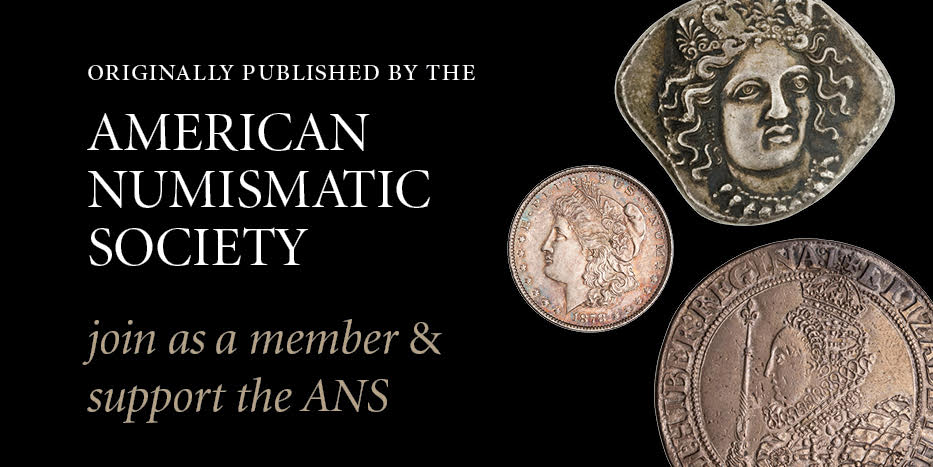By Alice Sharpless for American Numismatic Society (ANS) ……
There is a new Roman Republican Die Project (RRDP) release out now that includes the following control-marked RRC types:
RRC 342 was issued by C. Vibius Pansa in 90 BCE. Michael Crawford divided Pansa’s issue into six denarius types: 342/1, 342/2, 342/3, 342/4, 342/5, and 342/6. With this release, all of Pansa’s denarius types are now processed in RRDP. RRC 342/3, 342/4, and 342/5 all feature an obverse with a laureate head of Apollo, right, with a control mark below the chin.
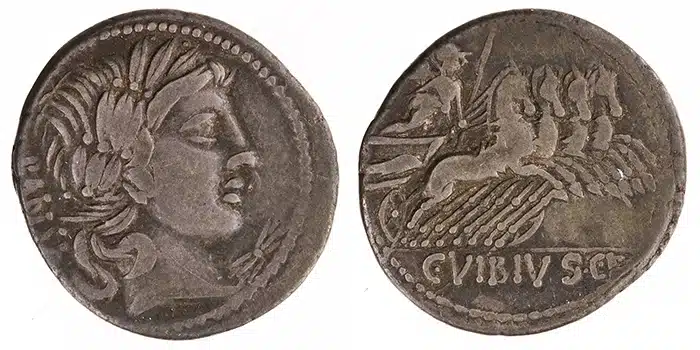
RRC 342/5 (Fig. 1) is the largest of the three types, but the obverse dies are shared between them. Currently, five dies are known that are used between 342/3 and 342/4, two between 342/3 and 342/5, 12 between 342/4 and 342/5, and one that is used with all three types. Estimates for the production of all denarii of RRC 342 are provided in Table 1. In order to increase coverage, Schaefer’s work has been supplemented with an additional 548 specimens from Coinage of the Roman Republic Online (CRRO). The estimate of 1,152–1,319 total obverse dies increases Crawford’s estimate of c. 1,000 dies.

Another notable feature of RRC 342/3, 342/4, and 342/5 is that the obverse heads show a wide variety of styles. Crawford split them into six stylistic groups (adapted from Sydenham), mostly distinguished by the length and style of the hair. Crawford’s groups are as follows, with the links to the dies he used as examples of each type in RRC (Pl. XLIV): A (Schaefer RRC 342/3 Obverse 14), A-C (Schaefer RRC 342/3 Obverse 5), C (Sharpless RRC 342/5 Obverse 1346), B (Schaefer RRC 342/5 Obverse 1105), D (Schaefer RRC 342/5 Obverse D1), and E (Schaefer RRC 342/5 Obverse E2).
Group A features short hair with tight curls, C has long hair divided into two locks down the neck, A-C is a “combination” of these two types with slightly longer hair than A but shorter than C. Group B features a smaller head also with short hair but less curly than A. Groups D and E both have long hair which is bound into a bun with two long locks draped over the neck, but are distinguished by different facial features. Although Crawford’s groups highlight some of the most common stylistic types, there are some additional stylistic variations that occur. Most of these could be associated with Crawford’s group C based on the length and style of the hair, but there are variations in facial features. A few examples of these variations are Schaefer RRC 342/5 Obverse 1044, which features a large nose and large eye; Schaefer RRC 342/5 Obverse 1006, which has a slim profile with long slightly pointed nose; and Schaefer RRC 342/5 Obverse 1054, with a long neck, flat nose, and large eye. Another unusual feature of these RRC types is the existence of five obverse dies with bead and reel borders (fig. 2).
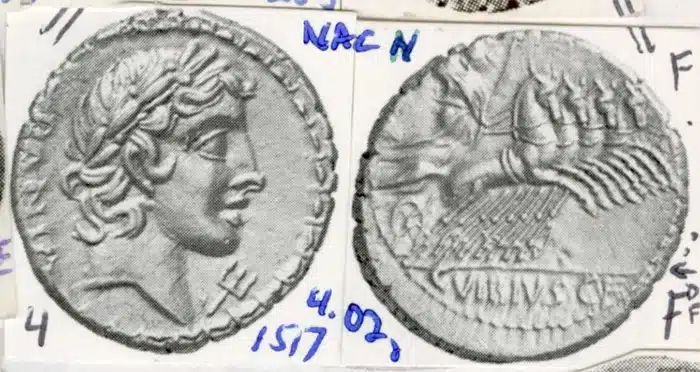
These were discussed by Bruce Brace in 1993, but Schaefer adds additional dies. Most of the bead and reel dies are associated only with RRC 342/5, but one is also used with 342/4. Bead and reel borders also appear on some dies of Piso Frugi’s denarii (RRC 340/1) minted in the same year (e.g., BM 2002,0102.2035).
The wide variation in style is probably due not only to the size of Pansa’s denarius production, but also the large size of the other denarius issues from 90 BCE, which—in addition to Pansa’s six denarius types—includes RRC 340/1 (L. Calpurnius Piso Frugi), and 341/1 and 341/2 (Q. Titius). According to data from RRDP, Titius’ denarii used between 1,074-1,714 reverse dies (43% coverage). Frugi’s denarius issue has not yet been processed in RRDP, but Crawford estimated 864 obverse dies, which is probably conservative. Using the estimate of 20,000 coins per obverse die and 15,000 per reverse, these updated numbers suggest a total production of roughly 56.4 to 69.4 million denarii in 90 BCE. This level of production—probably utilizing at least 6,000 dies in total—must have left die engravers in high demand and likely accounts for the wide variety of styles.
The other RRC types included in this release are ODEC issues, meaning they have one die per any given control mark. RRC 364/1b, a denarius serratus minted by Q. Antonius Balbus in 83-82 BCE, is especially interesting because, although it is not the only control-marked subtype in the issue, it is the only one which is ODEC (the others might have multiple dies with the same control mark). The control marks of 364/1b, which appear below the head of Jupiter on the obverse, are the 21 letters of the Latin alphabet. Schaefer observed 21 obverse dies, though this includes two dies with the control mark B and no die with a K. Accidental duplication of control marks within ODEC issues is common.
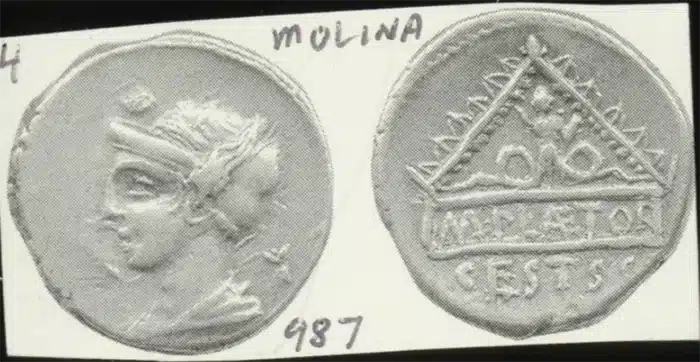
RRC 405/1 and 405/2 were issued by M. Plaetorius Cestianus in 69 BCE. RRC 405/1 has two subtypes: 405/1a without control marks (three obverse dies) and 405/1b, an ODEC issue with obverse control marks behind the female bust (14 obverse dies). Crawford had identified 14 control marks used with 405/1b (RRC, Table XXXIX), although the control mark he identifies as a “torch” (Bonazzi, 984) is actually the same as he calls “knife” (BMCRR Rome 3520). Schaefer identifies one die which Crawford did not include, which seems to have an astragalos (knucklebone) as the control mark and one die (Sharpless RRC 405/1b Obverse 1000) appears to be an imitation of Schaefer RRC 405/1b Obverse 5 (dagger). RRC 405/2 also features an obverse control mark behind the female bust. Crawford identified 12 control marks for this type (RRC, Table XL). The only control mark Schaefer’s archive does not include is “dividers” though there is one die where the control mark is not preserved on either specimen which may be the die Crawford observed. Schaefer’s archive also includes a die with a small curved object that might be a harpa and one with a sword. In addition to the ODEC obverse dies, the reverse dies for these two types have also been analyzed. RRC 405/1 uses 17 obverse dies to 21 reverse dies, though on one die (Schaefer RRC 405/1 Reverse 1004) the legend was recut from PLAETOR to PLAETOR (figs. 3–4). RRC 405/2, on the other hand, has a different ratio of 14 obverse dies to only 13 reverse dies.
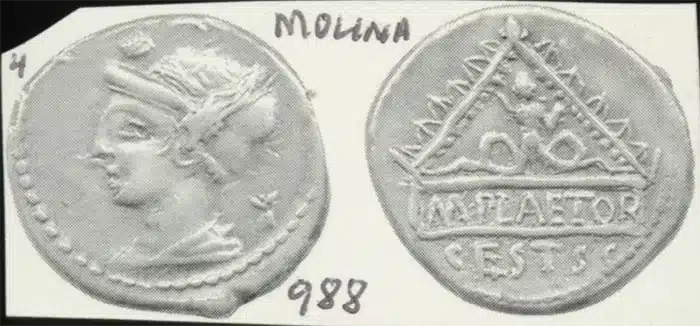
The next RRDP release, scheduled for September 2023, will contain additional ODEC issues that are currently being worked on by a group of students at Sapienza Università in Rome under the supervision of Lucia Carbone.
* * *
* * *


